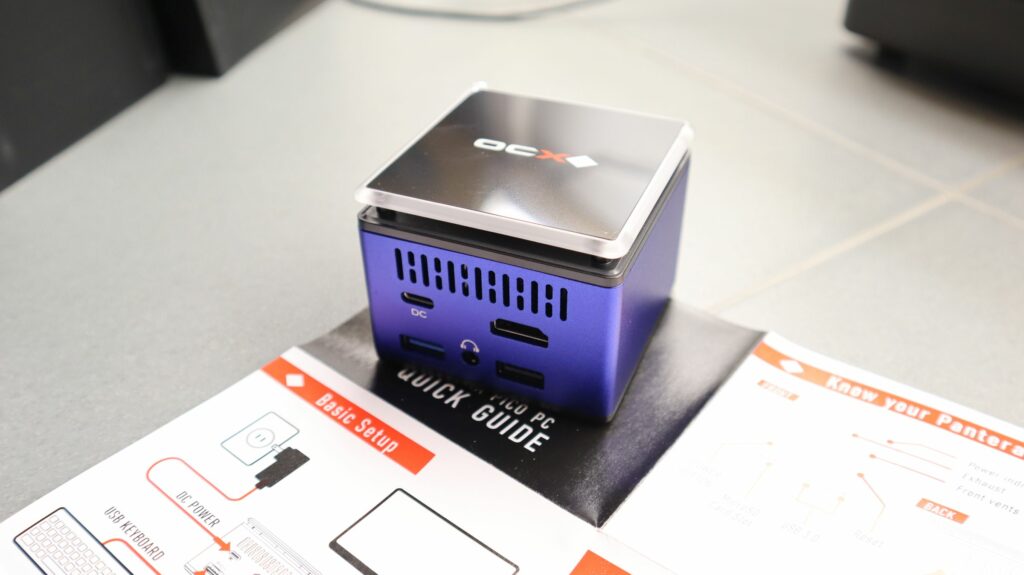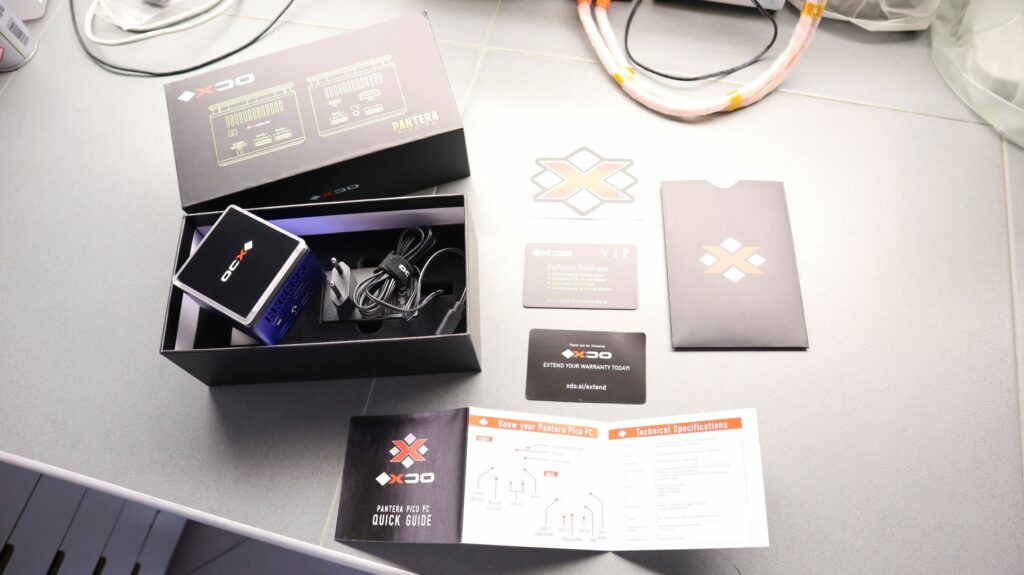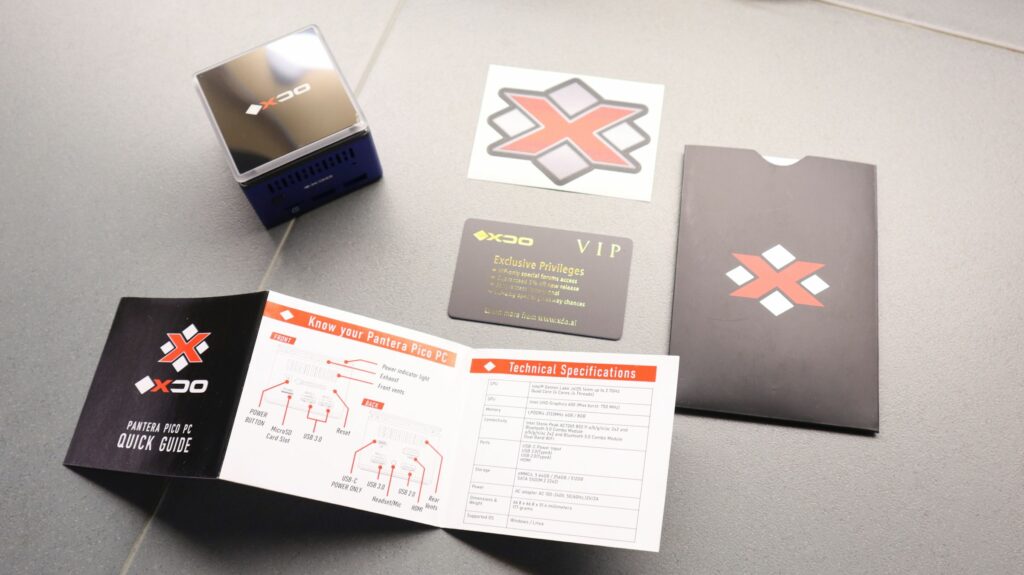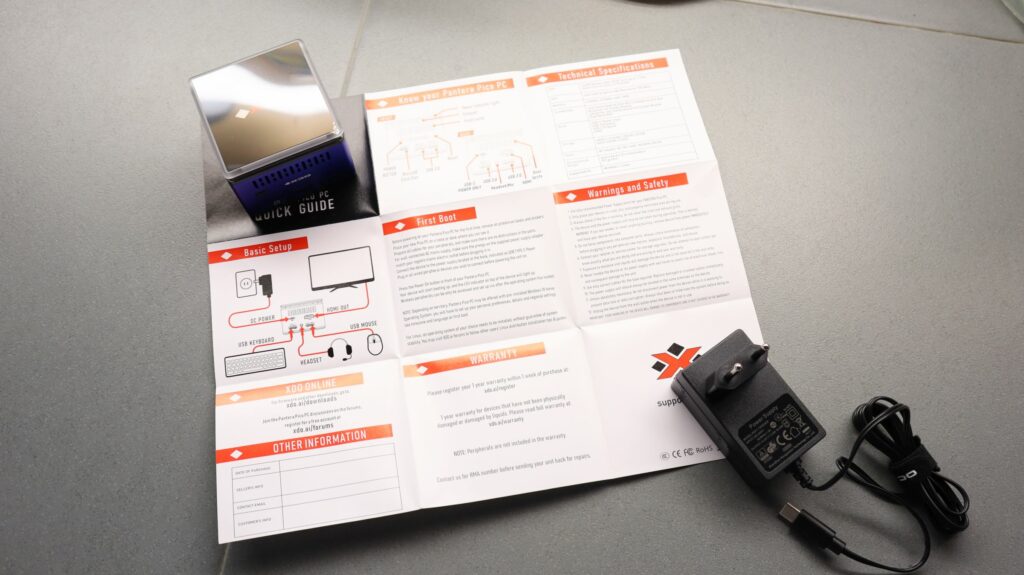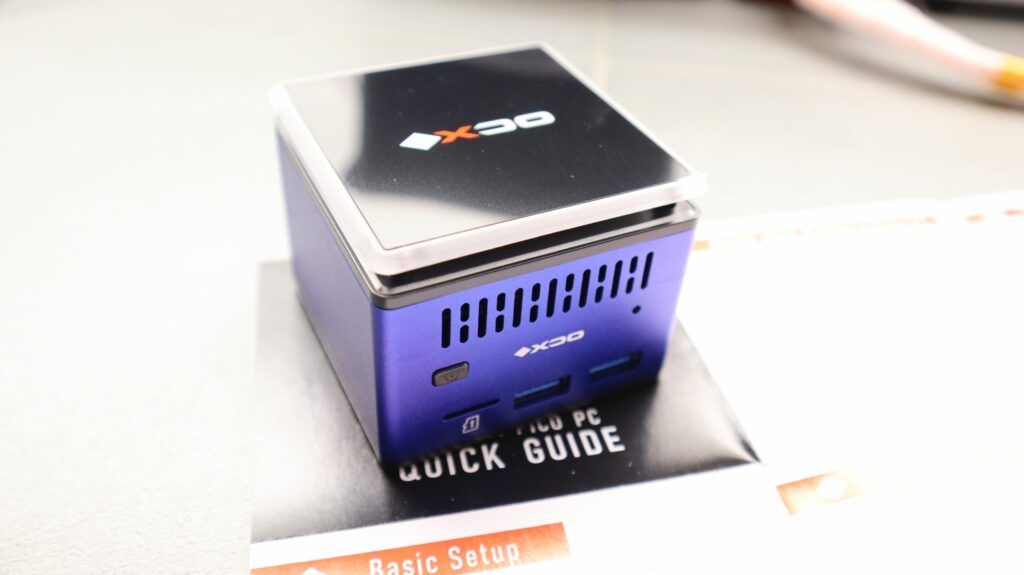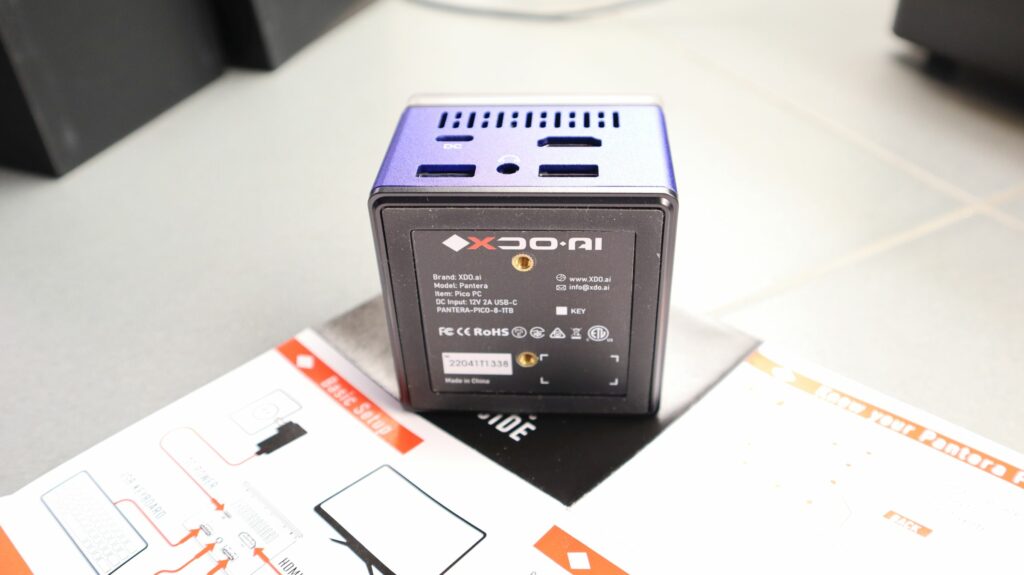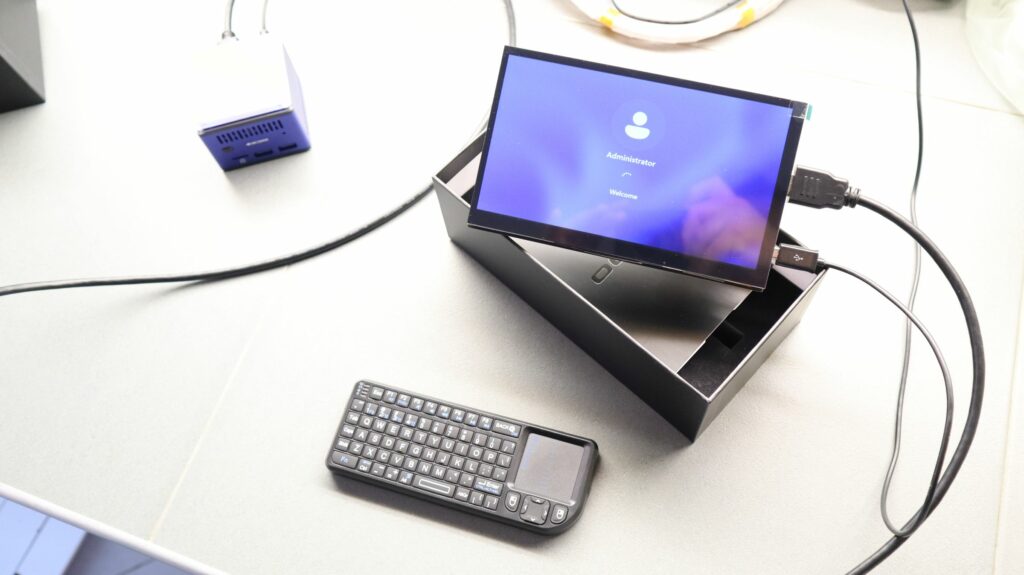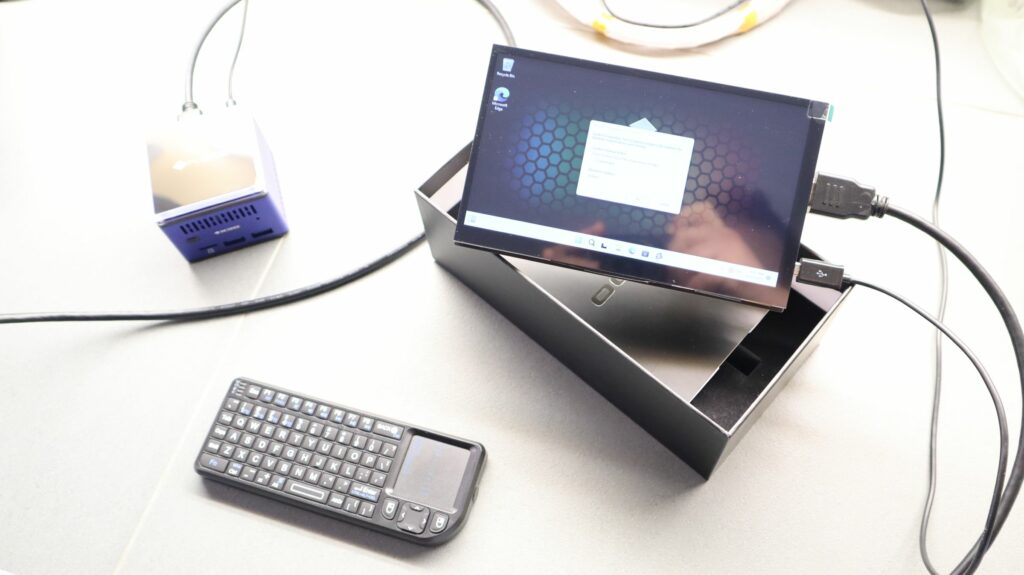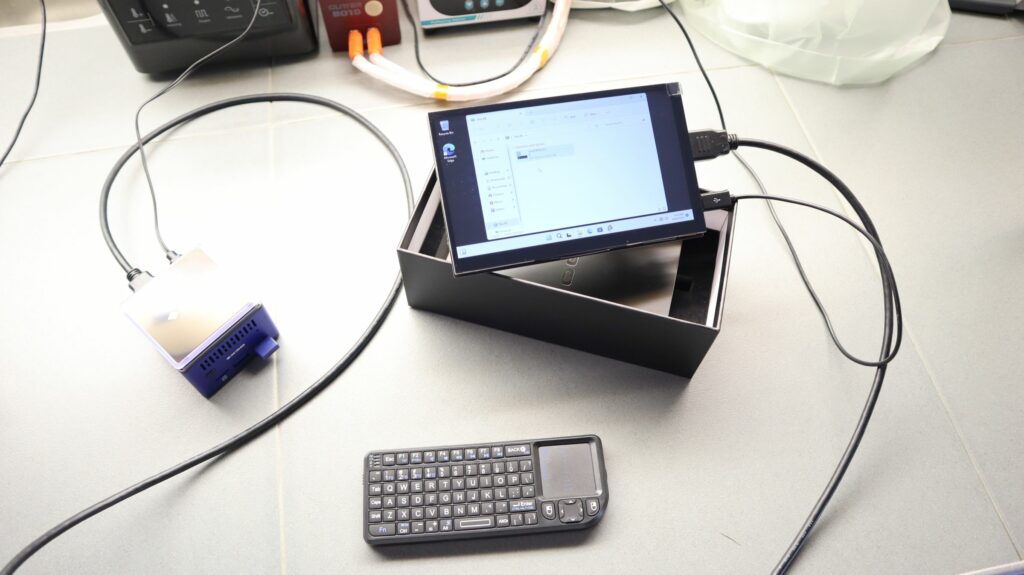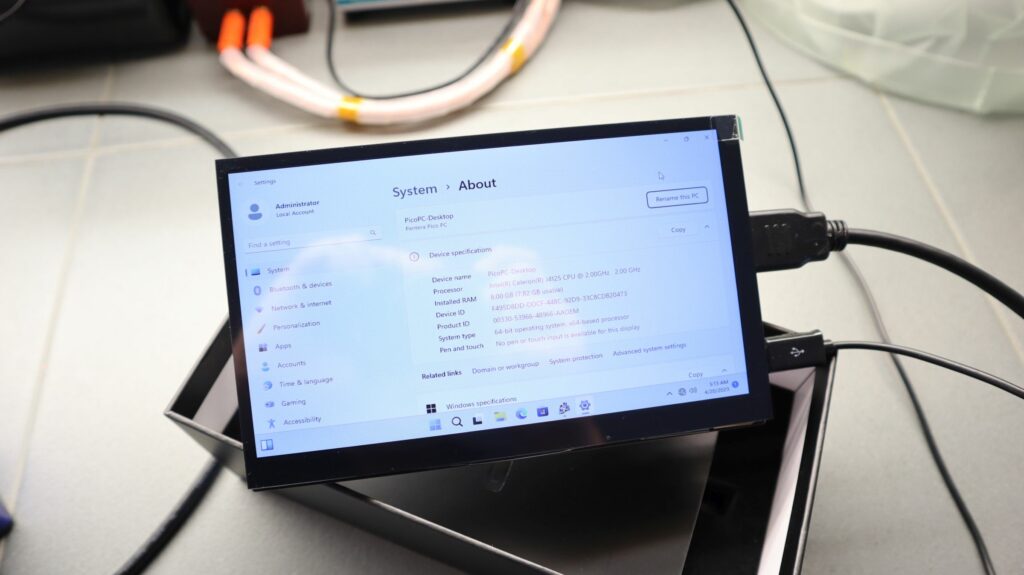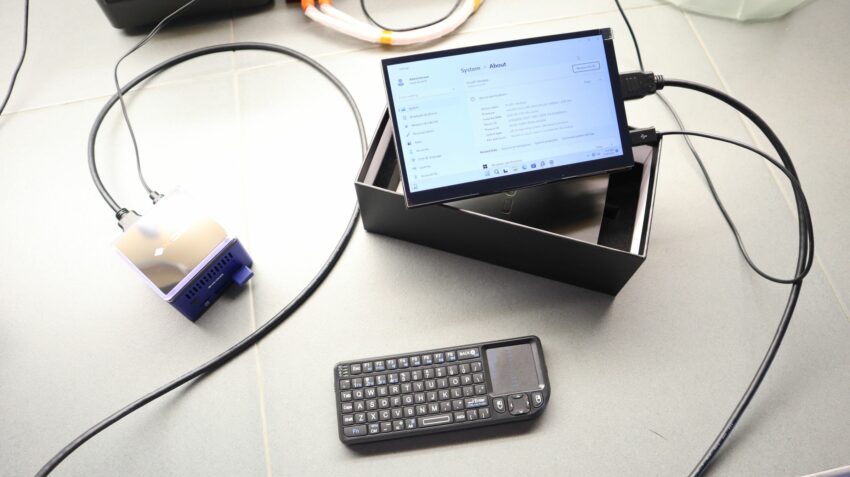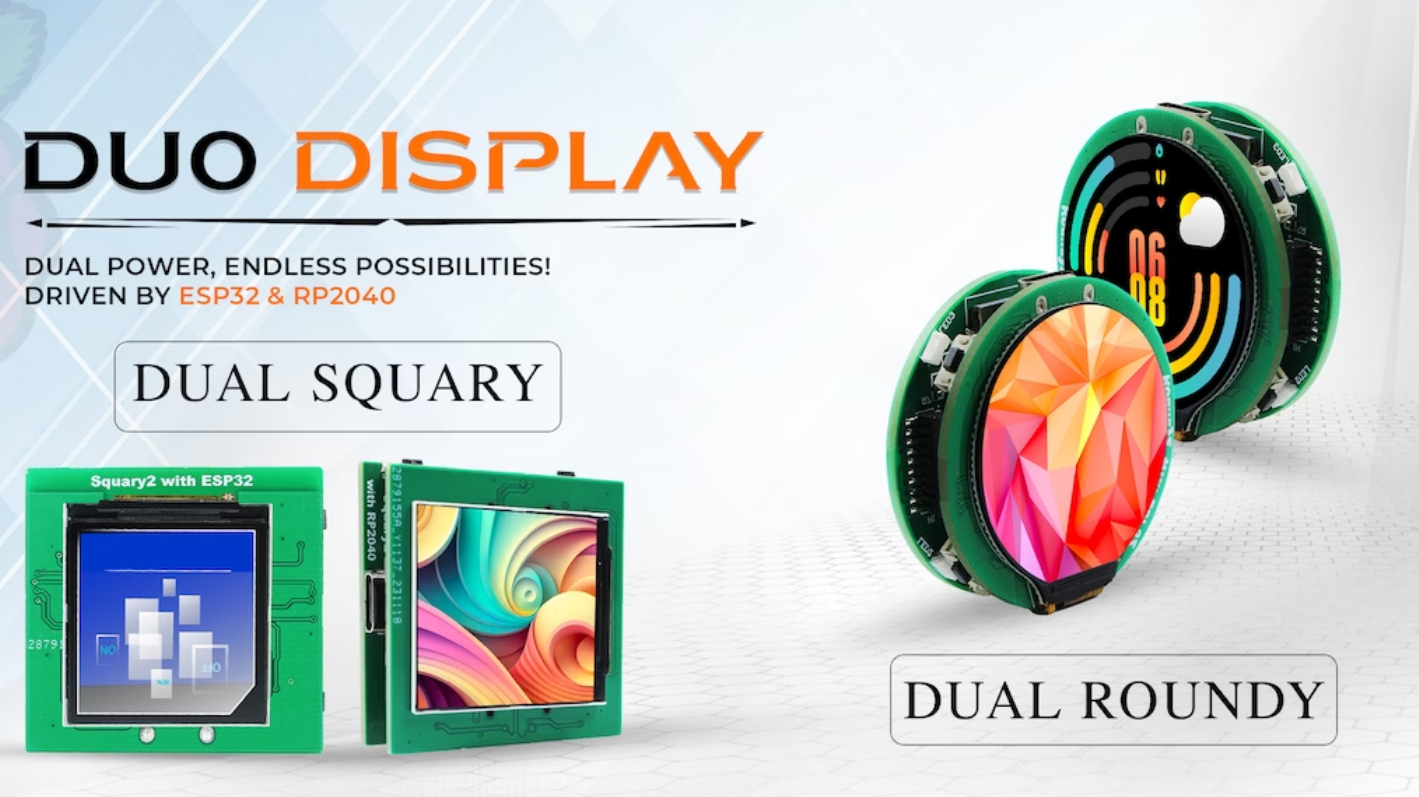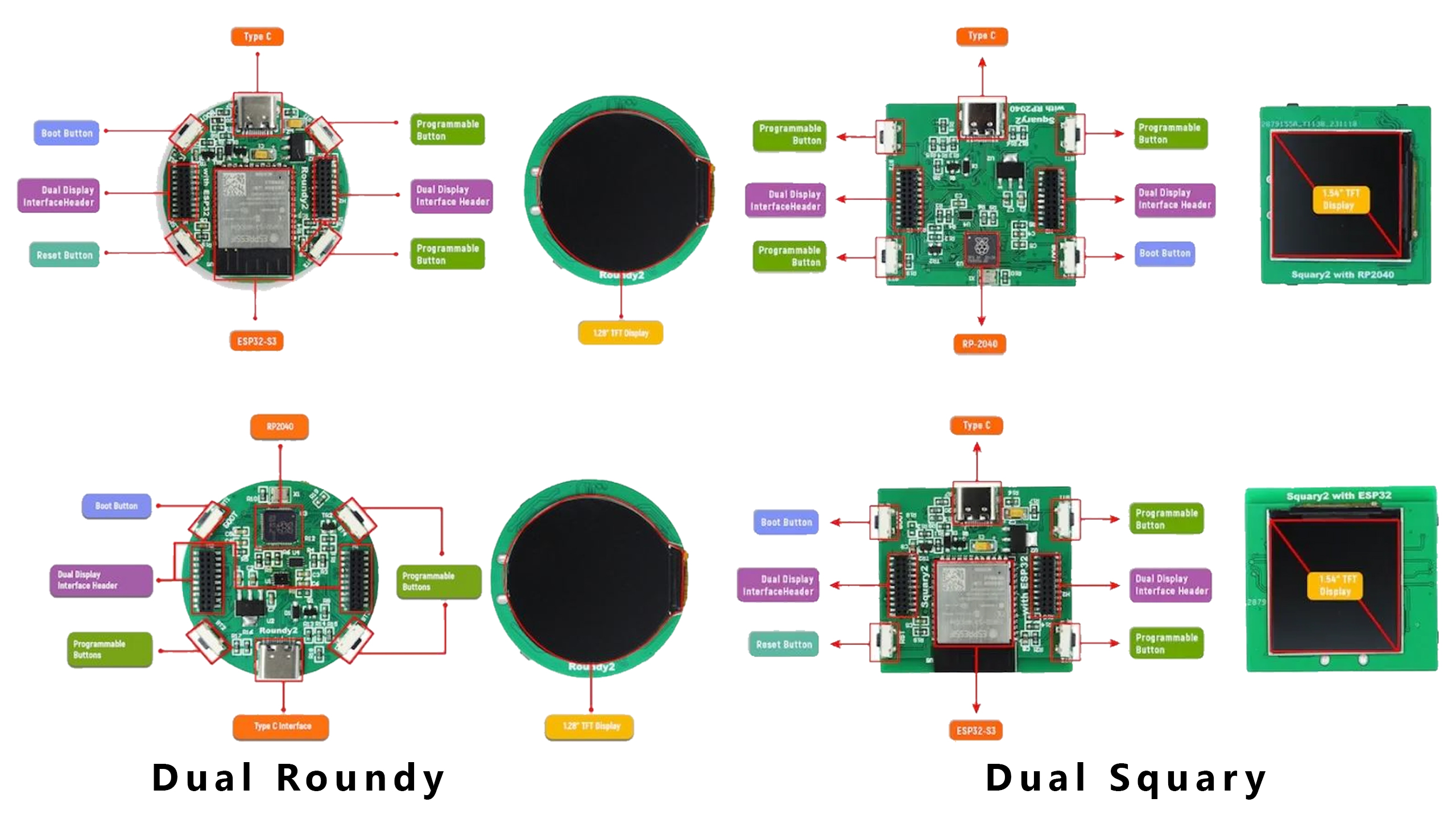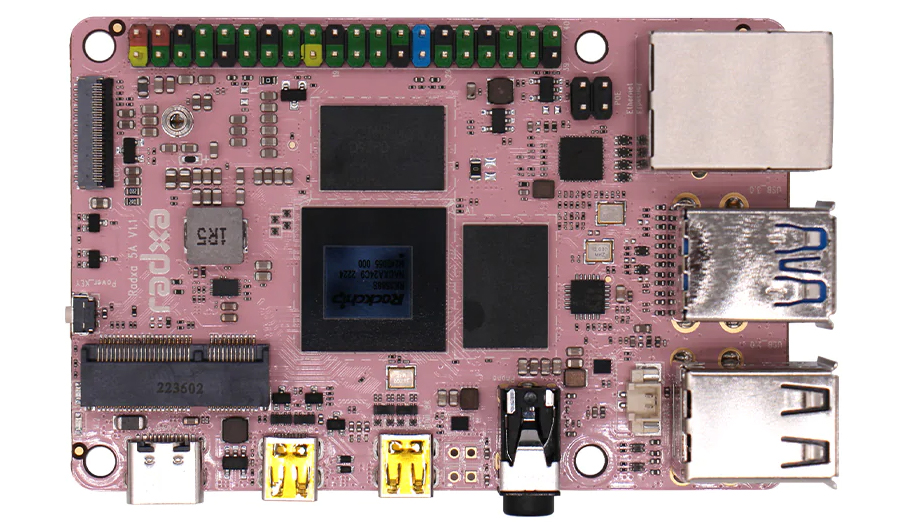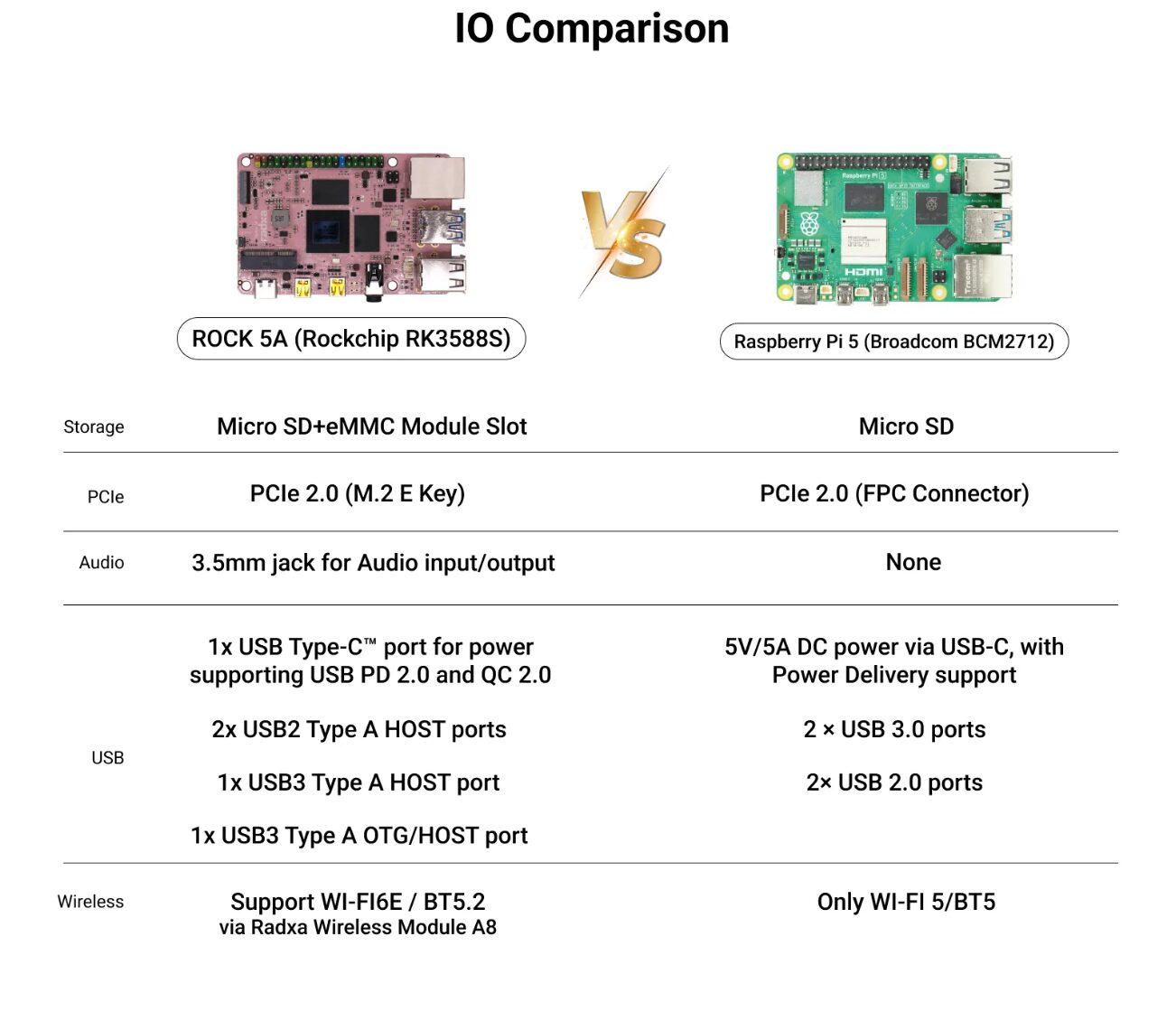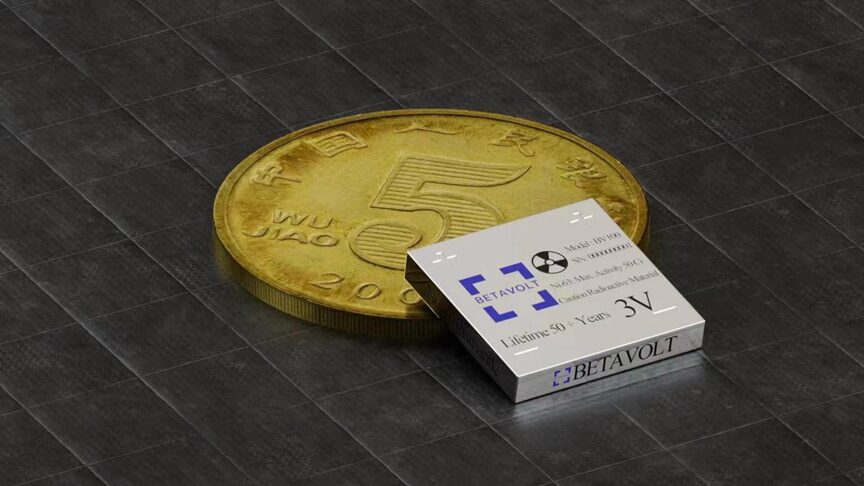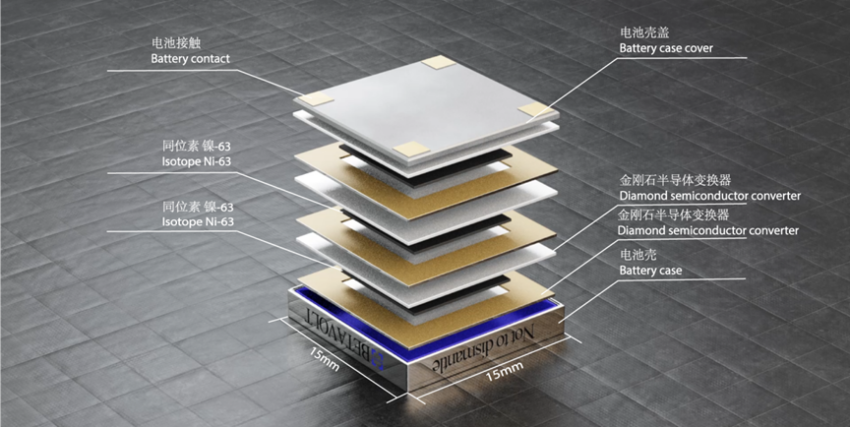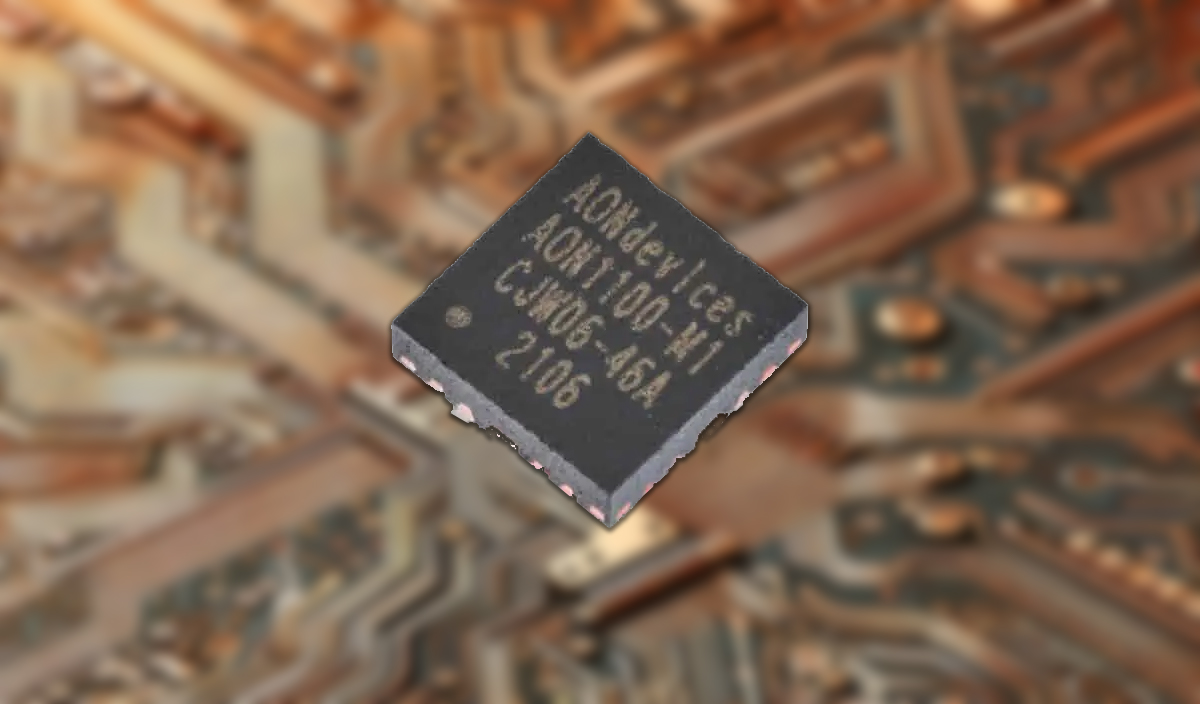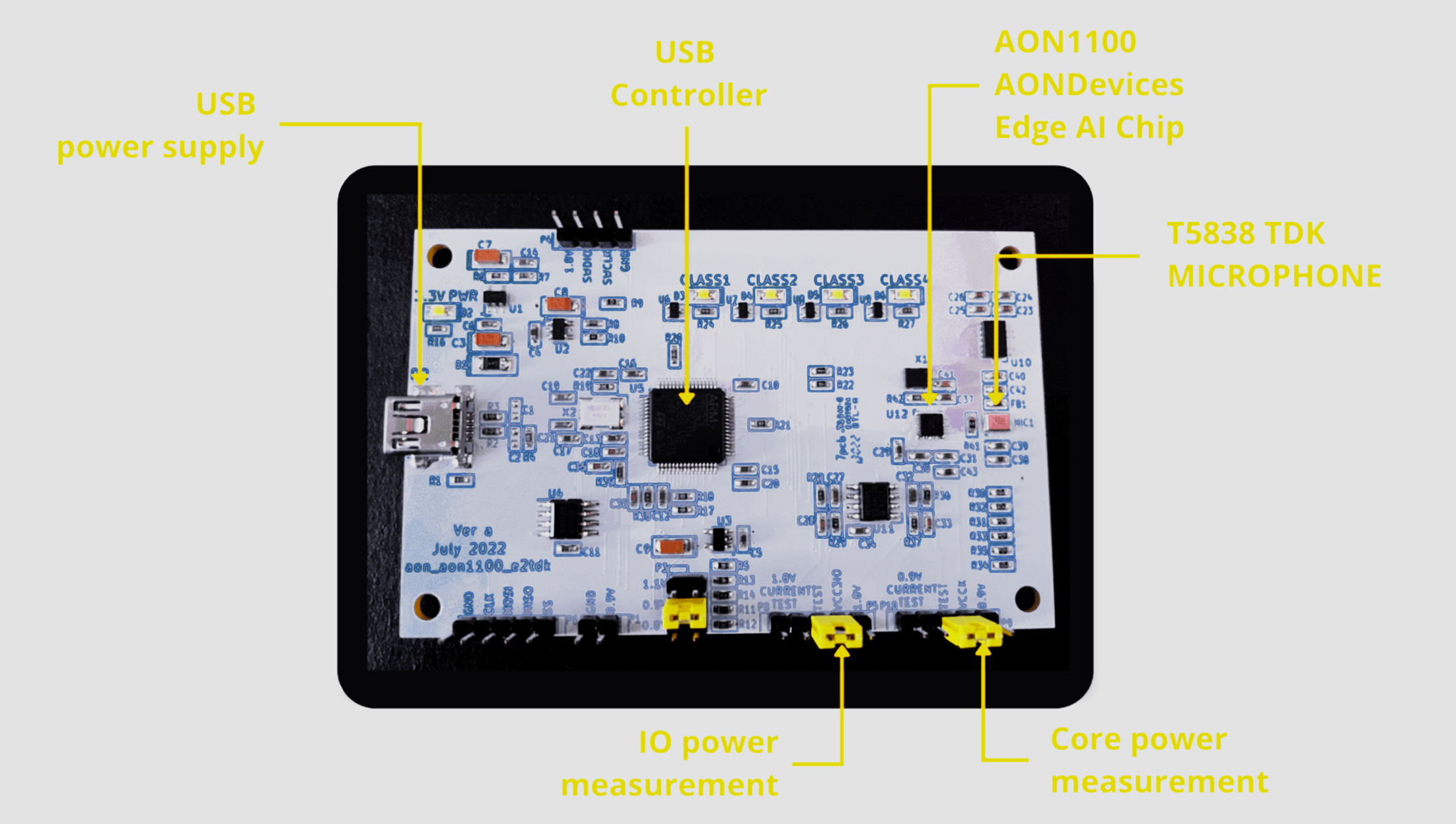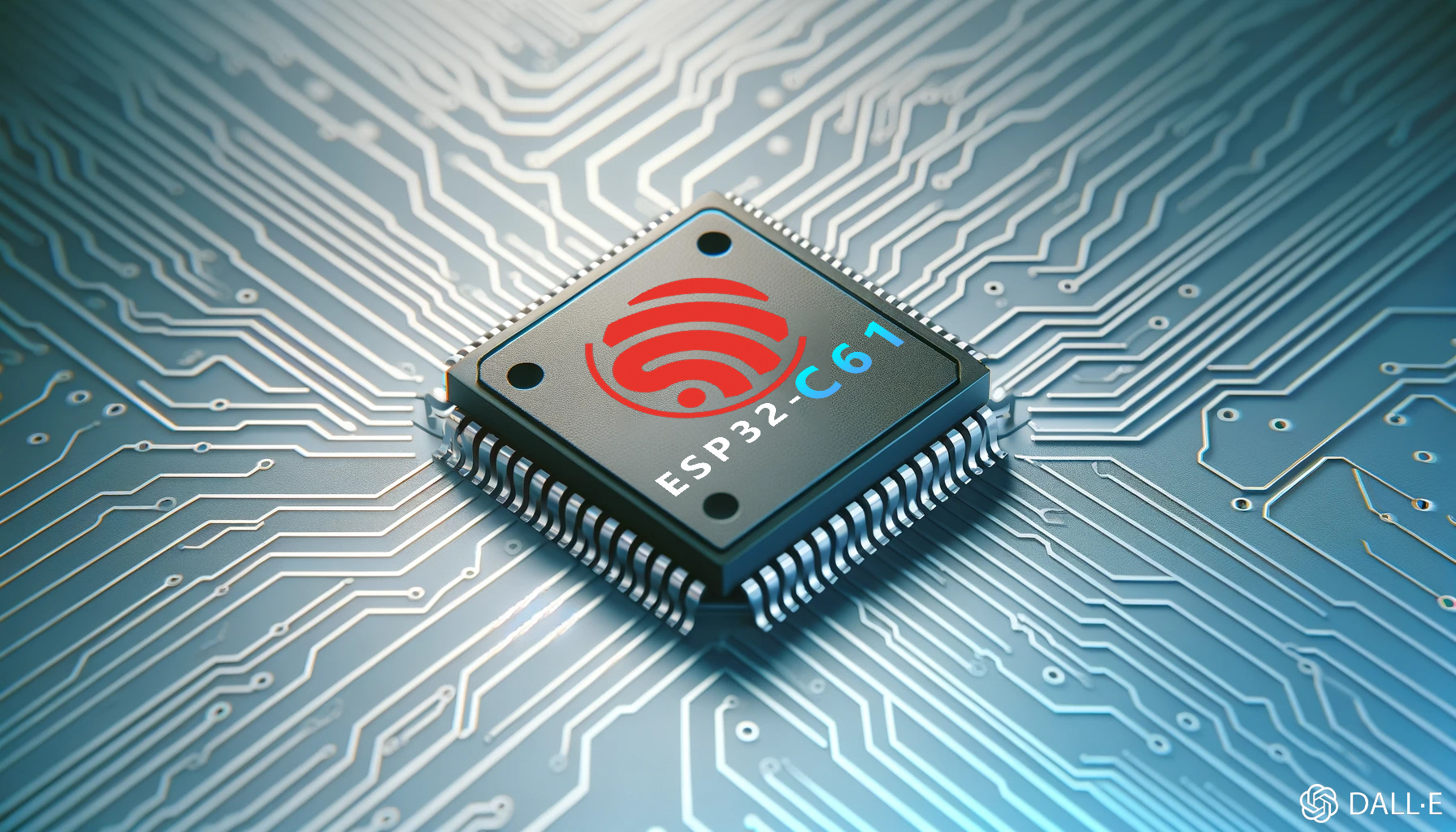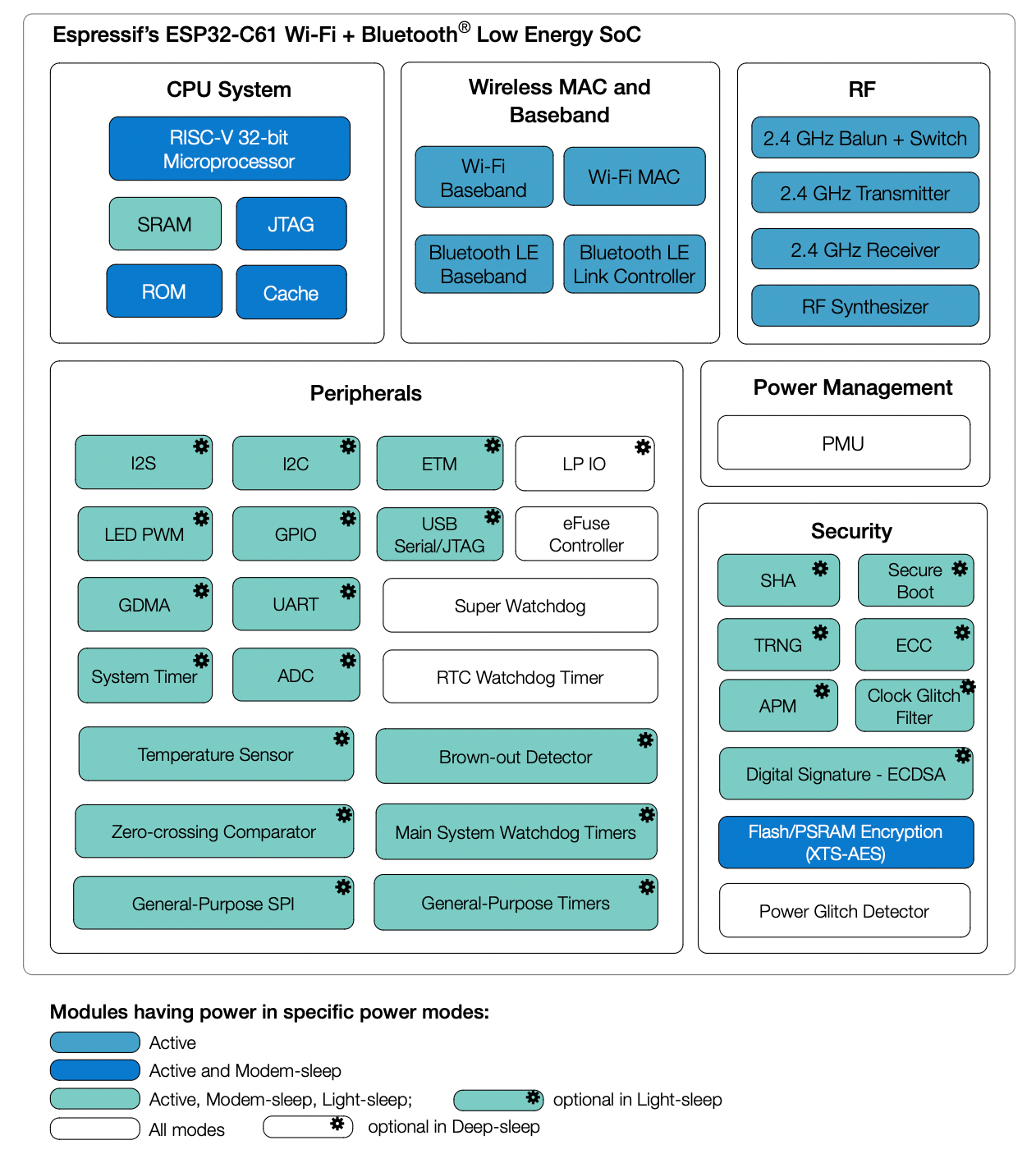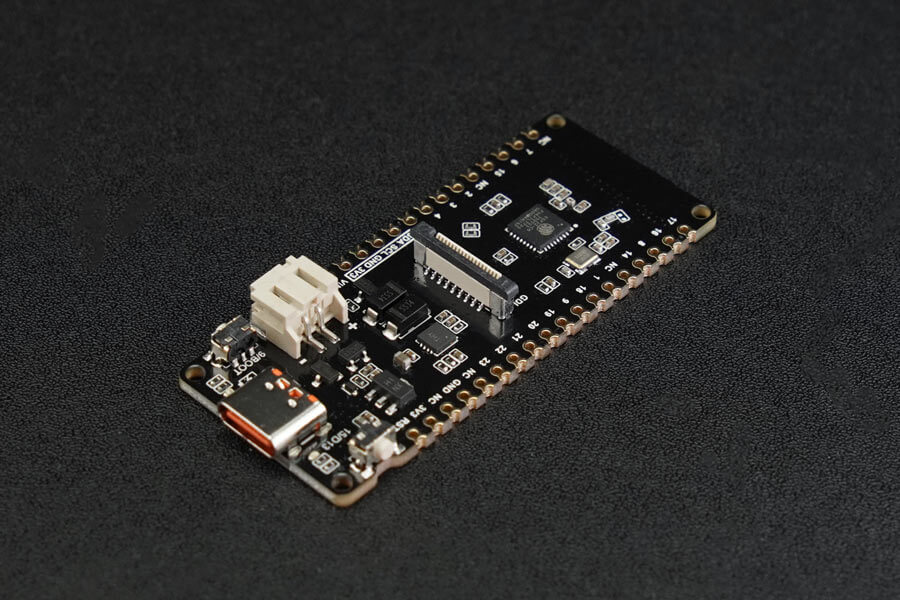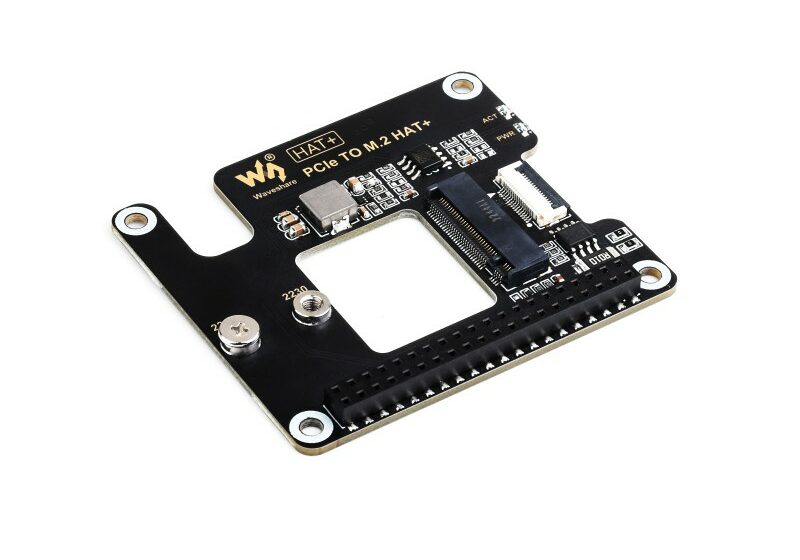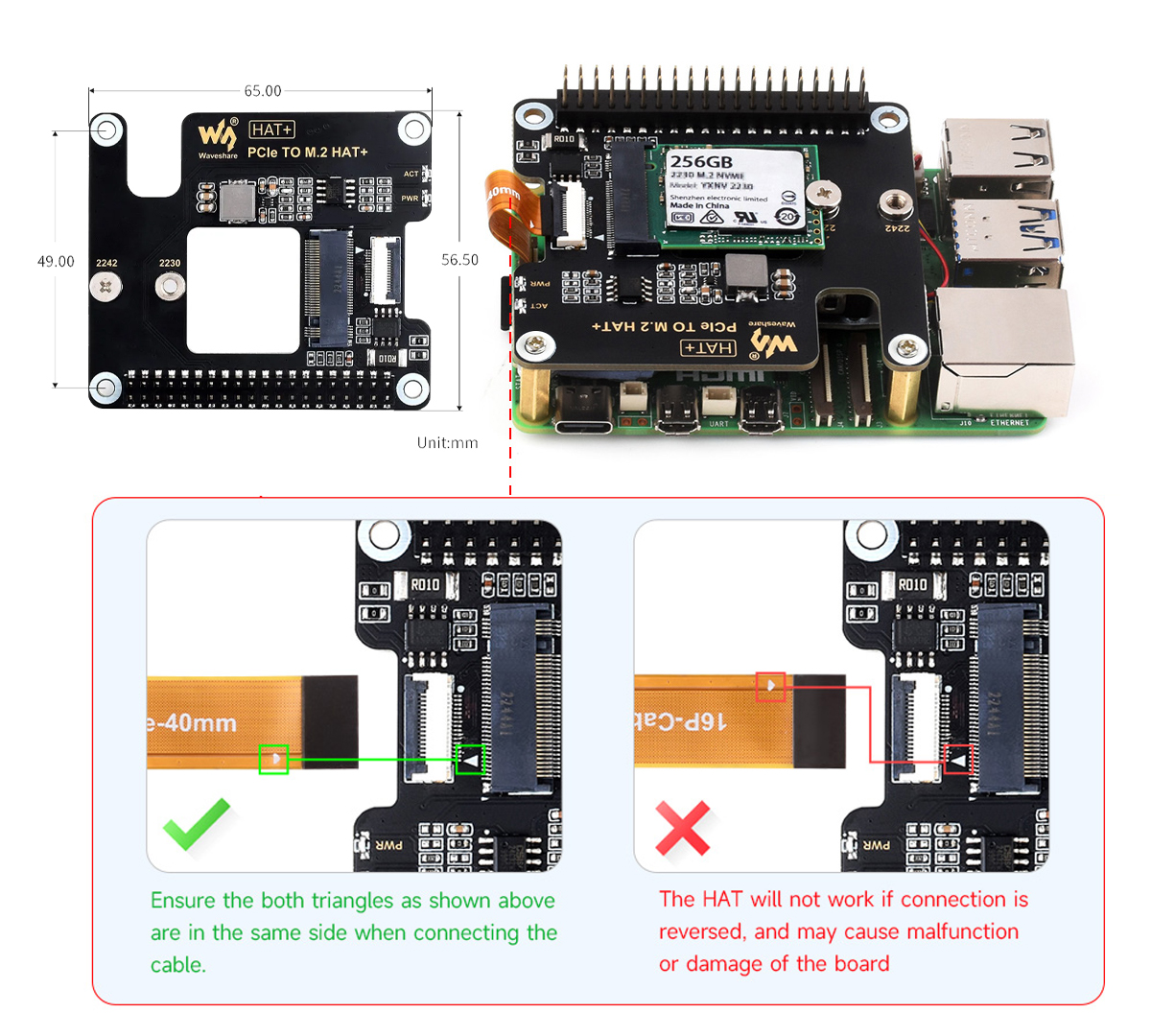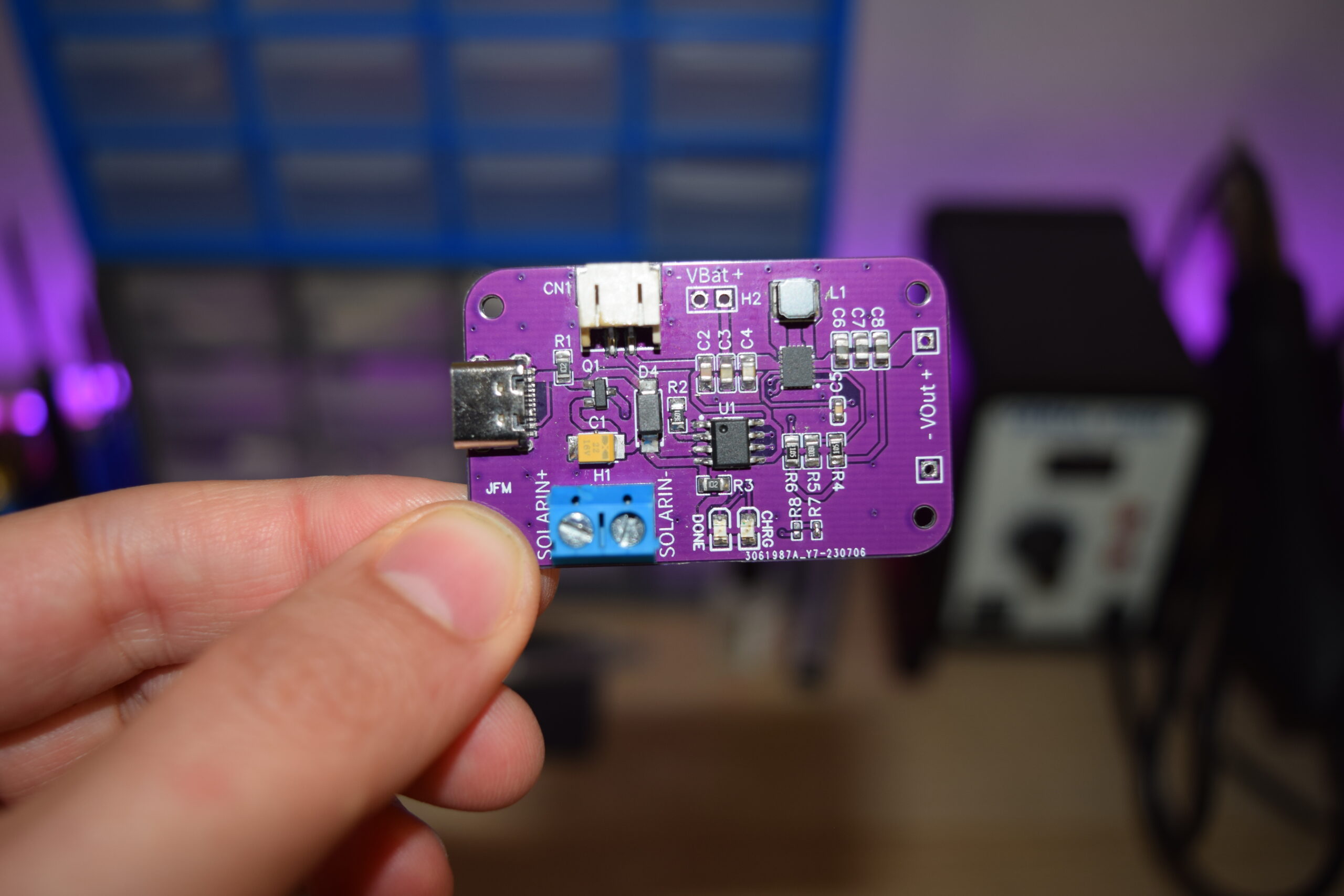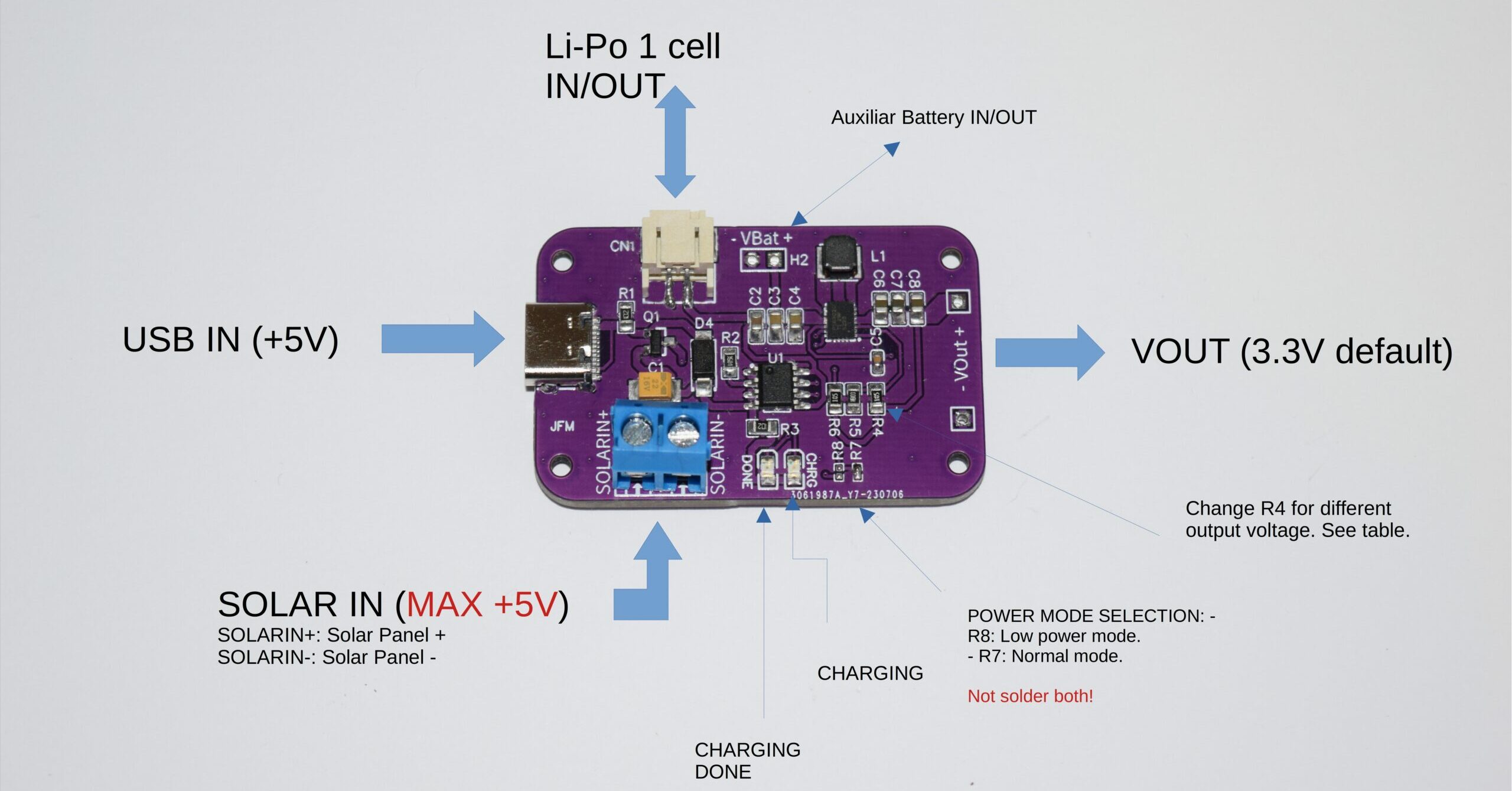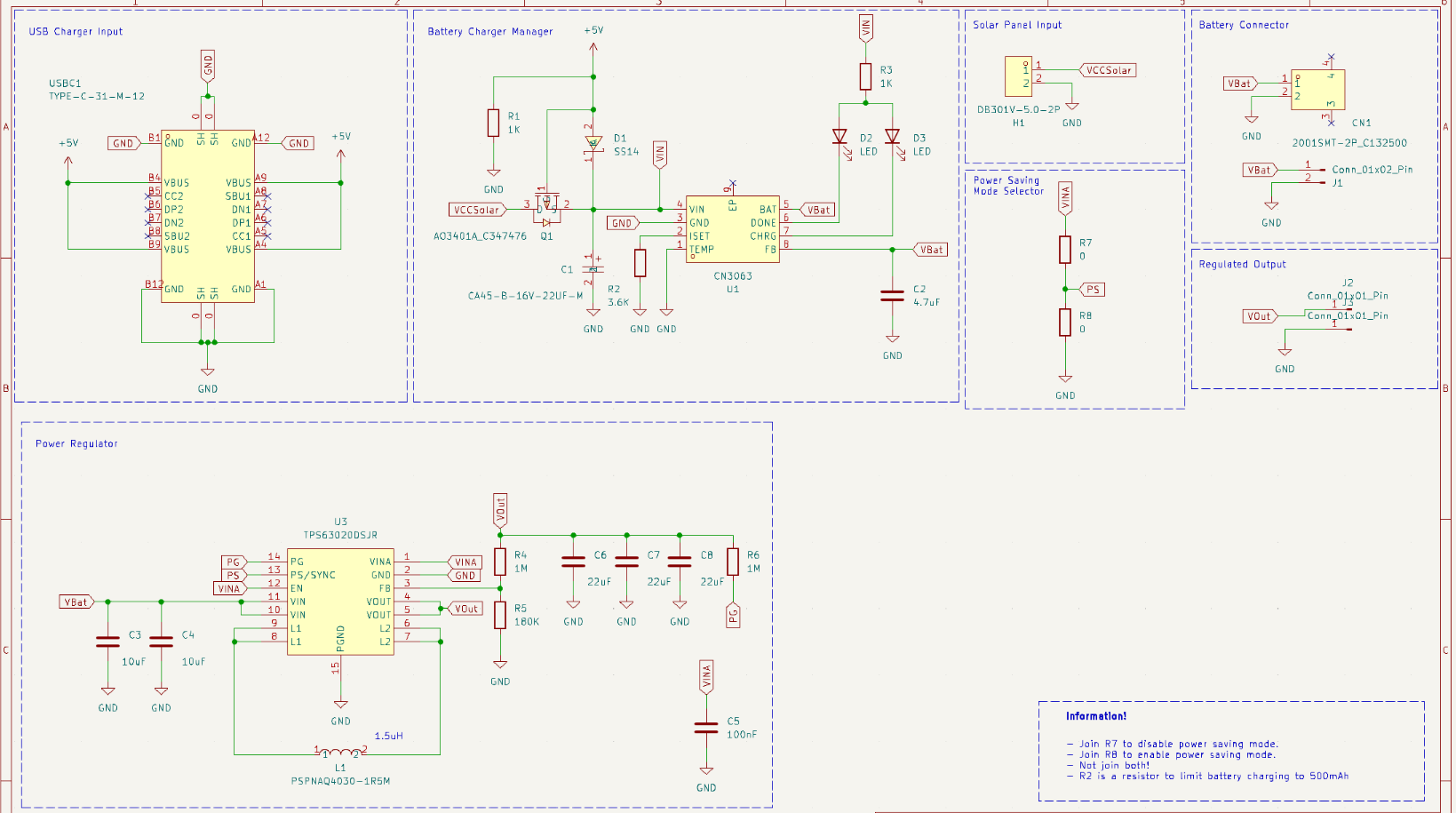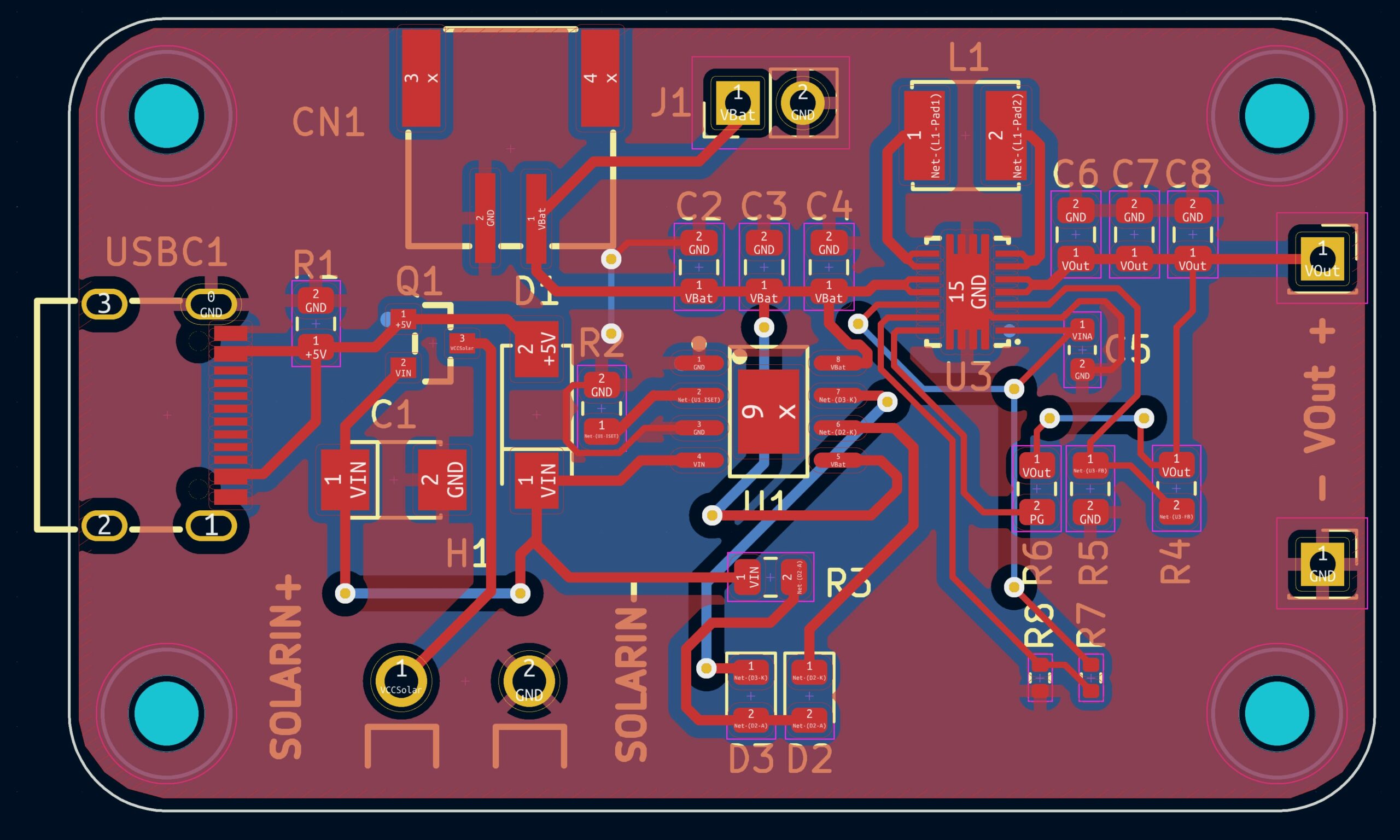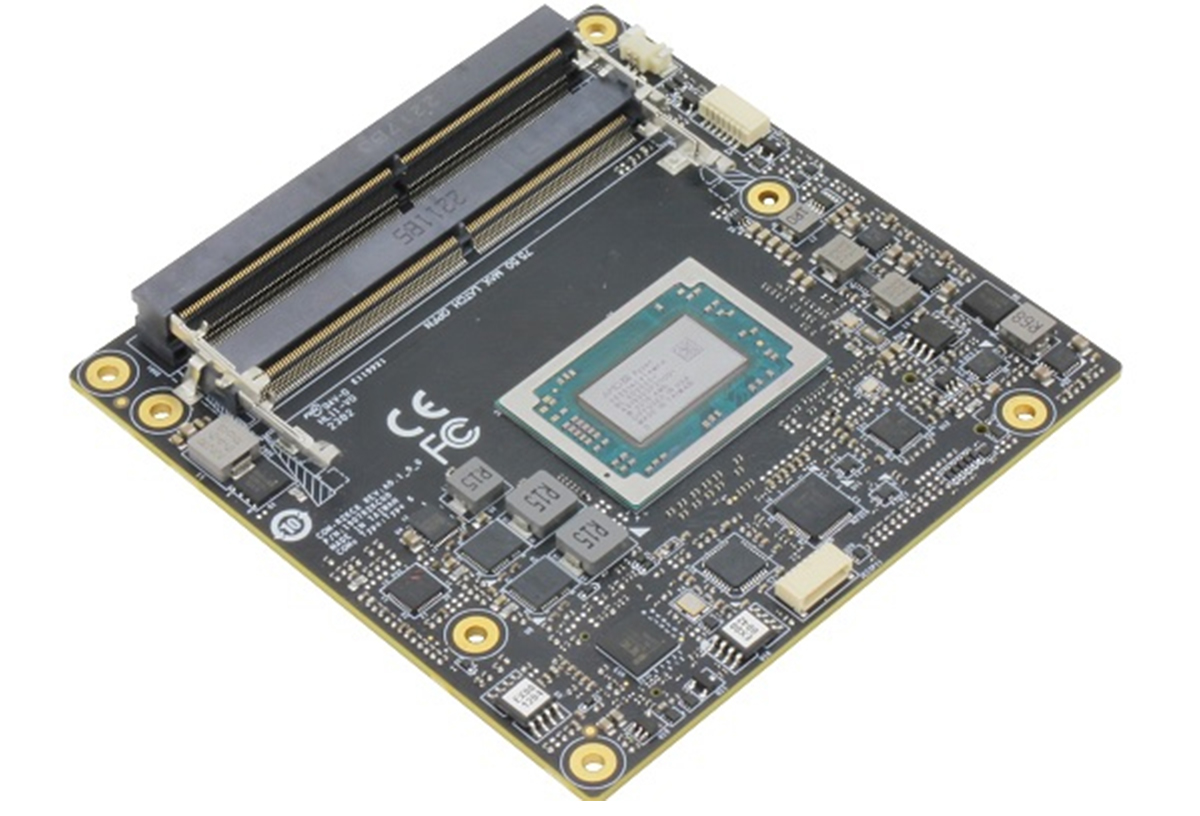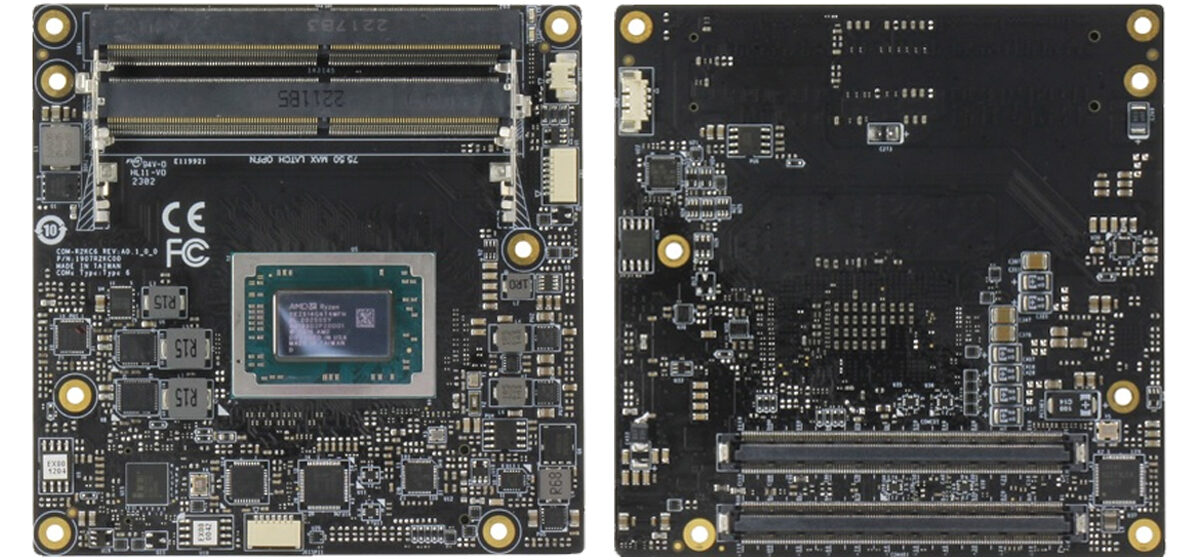Introduction
In the age of artificial intelligence and machine learning, the remote work culture is increasing daily. With this shift, the demand for compact, powerful, and versatile computing solutions has never been higher. Addressing this need, SDO has introduced the Pantera Pico PC, a miniature marvel designed to bridge the gap between the portability of a laptop and the power of a desktop PC. Here’s a comprehensive review of the Pantera PicoPC, touted as the:
“World’s Smallest Mini PC for Gaming & Work”.
The device is powered by an Intel Celeron J4125 Quad Core 2.7Ghz CPU and features up to 8 GB LPDDR4 RAM. It also has Dual Band WiFi & Bluetooth, a built-in SSD, and many other features, but the most interesting feature of this device is its size measuring just 6.9cm x 6.9cm x 5.3cm, it’s super portable. This miniature design ensures that the PC is light and can fit in your pocket or bag.
Top Reasons to Choose Pantera Pico PC
- Compact Size: Ultra-small desktop form factor; fits easily in most bags.
- Lightweight: Much lighter than a standard desktop tower.
- OS Compatibility: Supports both Windows and Linux.
- Versatile Use: Ideal for office and remote work setups.
- Entertainment Hub: Functions as a comprehensive home entertainment center.
- Future Ready: Compatible with Windows 11.
- Expandable Storage: Offers user-expandable storage options.
- Ample Connectivity: Boasts more USB ports than many competitors.
- Silent Operation: Features an ultra-silent cooling system.
- Visual Indicator: Equipped with a large 360-degree LED power indicator.
- High-Quality Video: Supports 4K UHD video output.
- Gaming Capable: Can be used as a gaming center.
Device Description and Features
As for the specs, the build quality of PicoPC is impressive. The body is built with a single block of aluminum, which makes the device look robust and stylish. The top and bottom of the PC are also made with durable plastic which makes this tiny device sturdier and resistant to bends and cracks. This material choice doesn’t not only adds to the aesthetics of the device but also ensures that the mini PC can handle daily wear and tear.
The PicoPC features an Intel Celeron J4125 CPU and 8GB RAM, handling tasks like web browsing and light editing smoothly. It offers 64GB to 1TB M.2 SSD storage, expandable with a MicroSD card.
Supports Windows 11 & Linux
The compatibility with both Windows and Linux operating systems is a major advantage. Users can opt for the familiarity and broad software support of Windows 10 or the flexibility and customization options provided by various Linux distributions. The user experience remains smooth across both operating systems.
Booting Windows 11
Connectivity
The device also features multiple connectivity options including multiple USB ports (3x USB3.0 and 1x USB2.0), a 3.5mm Audio Jack, HDMI, and more. With these ports, you can connect multiple USB devices such as keyboards, mice, external storage, and many other devices. Additionally, there is an option for Dual Band WiFi and Bluetooth 5.1 which ensures seamless wireless connectivity, further enhancing its usability.
This mini PC offers an external MicroSD card on the front of the device, and with that, you can increase the storage space of the device if there is a requirement. you can also use that slot to dump media from your camera to the SSD of the device. Talking about the SSD, you can also replace the SSD with a larger one to get even more storage for your PC. The storage size of the device we received was 1TB, which is more than enough for more usage scenarios.
The Pantera Pico PC is designed to meet all the latest standards of Microsoft, meaning you can easily install and work with Windows 11 and later making this device future-proof for further updates.
The Pantera Pico PC has a small fan, that is always spinning at full RPM upon power on, so this may be annoying for some users while trying to work in a quiet environment. We didn’t notice any feature to make the fan less noisy, even though the miniPC doesn’t heat much in IDLE. In any case, you won’t hear much noise while watching movies or TV shows, so this may be suitable as a Media PC. The small heat sink effectively cools the processor, keeping the PC running smoothly during any usage, that’s for sure. Additionally, it includes a 360-degree LED power indicator, that shows when the PC is powered on.
Games Capability
The developers of the devices indicate that this Tiny PC is capable of outputting 4K up to 60 frames per second for that buttery smooth video. so you can configure this PC as a media Streaming Device. the also indicates that this device can run Games like Minecraft, CS Go!, and Half-Life 2, which I am doubtful of, but it requires some testing.
The company offers an optional carrying case to protect your Pantera Pico PC during transport. You can choose from different EVA cases at checkout.
Technical Specifications of Pantera Pico PC:
- Processor: Intel Celeron J4125 Quad Core 2.7Ghz CPU.
- WiFi: Dual Band 2.4Ghz/5Ghz at 422Mbs.
- Memory: Up to 8GB LPDDR4 in dual-channel mode (2x 4GB).
- Storage: Options up to 1 Terabyte M.2 SSD.
- Dimensions: Ultra-tiny, measuring 2.63 x 2.63 x 1.75 inches.
- USB Ports: Includes 3x USB 3.0 and 1x USB 2.0.
- Power: 12V USB-C power port.
- SSD Storage: Dual SSD storage capability.
- MicroSD Slot: Available for storage expansion.
- OS Support: Compatible with 64-bit Windows 10 and various Linux distributions.
- Audio: Combo speaker/microphone jack.
- Cooling: Powerful fan with a robust heat sink for efficient heat management.
Available Accessories
The company provides various accessories for the Pantera Pico PC including accessories like the PicoProjector, foldable keyboards, and small mice. but there is another set of accessories that comes in with a PicoPc + PicoProjector + PowerStation. but the company said the combined weight of PicoPC, PicoProjector, and PowerStation is much lighter than typical laptops and desktops.
Conclusion
The Pantera Pico PC, with its compact design, is not only perfect for everyday computing tasks but it can also be used in day-to-day tasks. With its compact design, it can be used for point-of-sale (POS) systems, digital signage, CCTV systems, and many other tasks.
Pricing
The Pico PC is available on Indiegogo, where the base model of the Pantera Pico PC starts at $175 USD with 4GB RAM/64GB ROM and the top model with 8GB RAM/1TB SSD costs $258 USD. It is also available in multiple colors, catering to both basic and advanced computing needs.
Additional information about the device can be found on the Picopc’s website.



